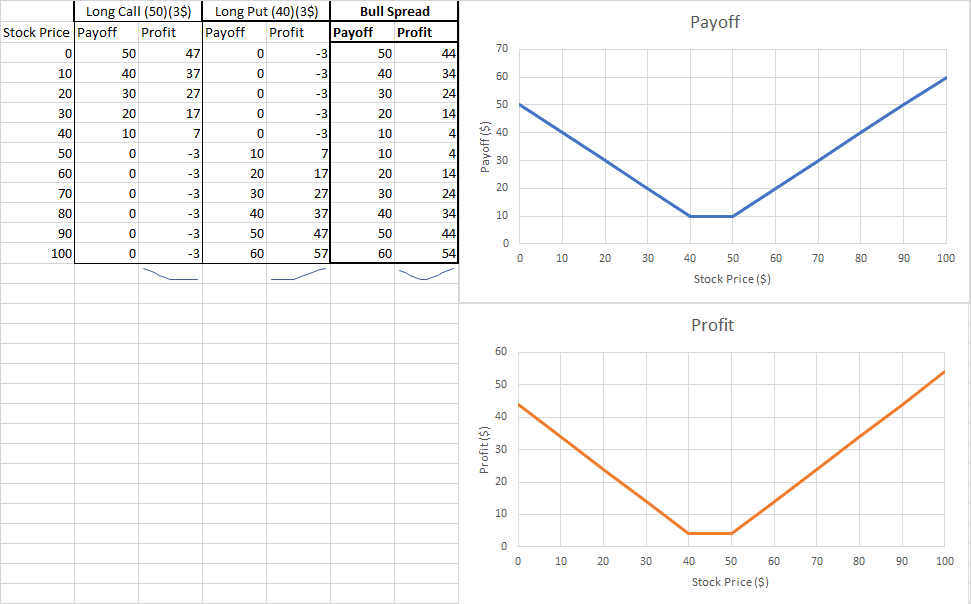A strangle is a volatility bet where you simultaneously long a call at Strike Price 2 and long a put at Strike Price 1. You will notice that the difference with a straddle is the difference strike price for the long call. By buying a call with a higher strike price, you are buying a cheaper call, thus reducing the transaction costs.
A strangle has payoff/profit that is somewhat similar to a straddle. The difference resides that there is a region between strike price 1 and strike price 2 where the payoff/profit is stable. Traders can also bet again volatility by shorting a call at Strike Price 2 and selling a put at Strike Price 1.
What are its components?
A long straddle has two components:
- Long put at strike price 1
- Long call at strike price 2
*(A short straddle can be created by shorting a call at strike price 2 and shorting a put at strike price 1)
When and why should I have a strangle?
You should have a strangle if you expect to see a lot of fluctuation in the underlying asset’s price. Creating a strangle does not infer that you have a specific view on the stock. It simply implies that the trader expects a lot of volatility and executed a strategy to gain something from it.
What is the payoff and profit graph?

What is the break-even point?
The break-even point of a strangle can be defined by finding the stock price where the strangle generates a zero-dollar profit. By adding all contracts and equating it to zero, you should solve for ST. However, there is a possibility where a region of stock prices can break-even. To find those two points, you should create scenarios to define the payoffs. For example, the payoff when ST<40, 40<ST<50 and 50<ST.